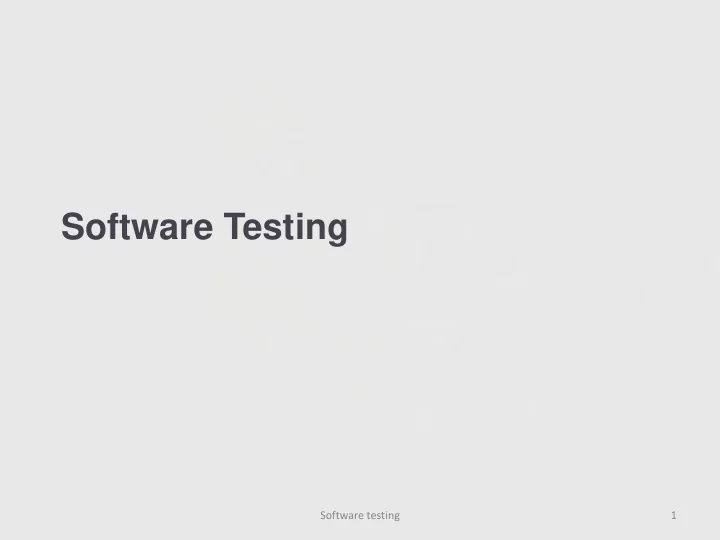

Software Testing Software testing 1
V model Software testing 2
Program testing goals To demonstrate to the developer and the customer that the software meets its requirements. => leads to validation testing To discover situations in which the behavior of the software is incorrect, undesirable or does not conform to its specification. => leads to defect testing Software testing 3
Verification vs validation Verification: (testing) "Are we building the product right”. The software should conform to its specification. Validation: (checking) "Are we building the right product”. The software should do what the user really requires. Software testing 4
Different levels of testing related to the V-model Verify the concepts and requirements e.g. Are the domain model right? The use cases? (the users) Verify the design e.g. design class diagrams and design sequence diagrams (Reviews, Technical walkthrough by the project team) Component Validation e.g. unit test and test cases (implementor) System and integration validation e.g. system/integration test Operation Validation e.g. acceptance test Software testing 5
Software testing 6
Software testing 7
Equivalence partitioning Software testing 8
Equivalence partitions Software testing 9
Test-driven development Test-driven development (TDD) is an approach to program development in which you inter-leave testing and code development. Tests are written before code and ‘passing’ the tests is the critical driver of development. You develop code incrementally, along with a test for that increment. You don’t move on to the next increment until the code that you have developed passes its test. TDD was introduced as part of agile methods such as Extreme Programming. However, it can also be used in plan-driven development processes. Software testing 10
Test-driven development Software testing 11
Recommend
More recommend